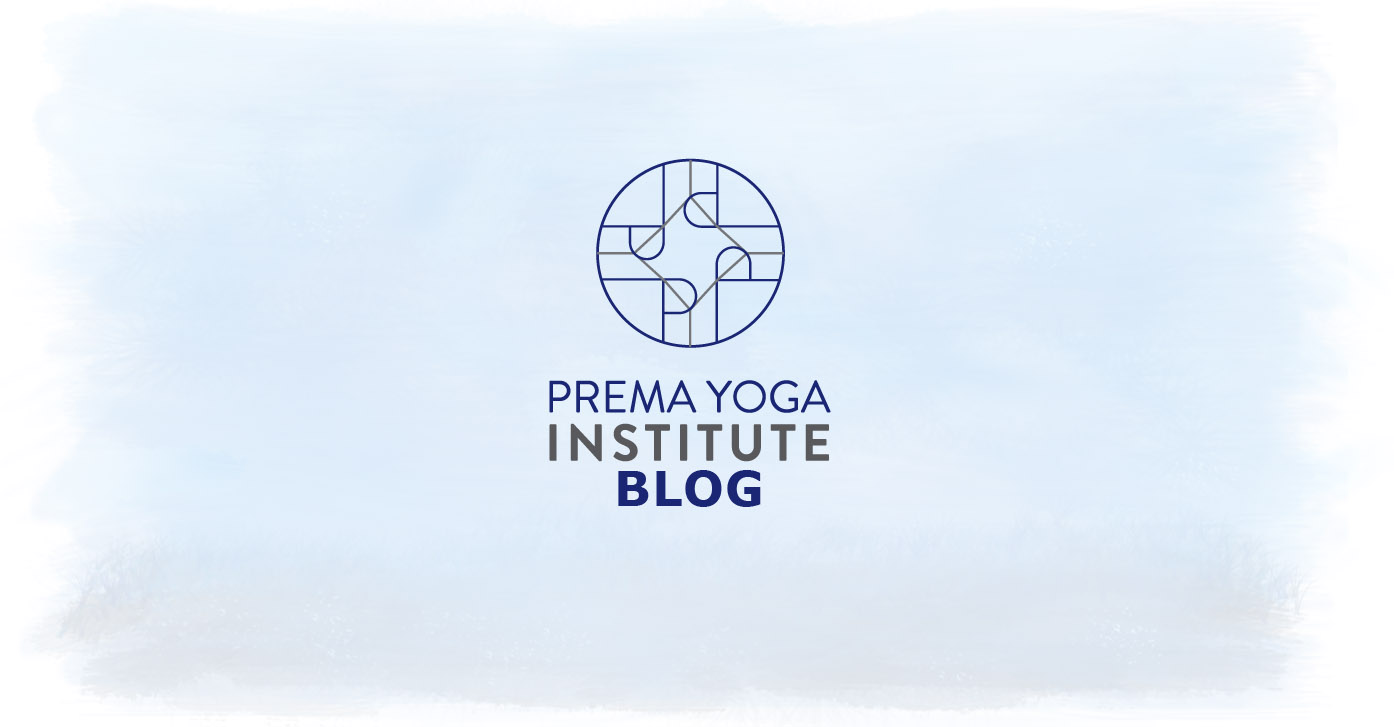
How Studying Functional Anatomy Can Inform Your Yoga Teaching
How Studying Functional Anatomy Can Inform Your Yoga Teaching
Studying functional anatomy can help inform your yoga teaching to create safer, more inclusive sequences and classes.
Merging functional anatomy with yoga will allow you to view your practice from a new perspective, and is beneficial for you as a yoga teacher and for your students.
The Fundamentals of Functional Anatomy
To better understand how functional anatomy can inform you as a yoga teacher, let’s start by taking a look at some of the fundamentals of functional anatomy.
Traditional methods of studying anatomy focus on what happens to the skeleton during muscle contractions. Functional anatomy brings another dimension to muscle movement. As the human form carries out routine actions, like walking, lifting, and sitting, functional anatomy examines all muscles and their relationship – a truly yogic perspective.
How does one muscle work with the surrounding bones and joints during flexion and extension? Functional anatomy has the answers!
The elbow joint is a great example. Anatomy tells us that the bicep contracts and shortens, flexing the elbow and bringing the forearm closer to the body. It's a straightforward analysis. When viewed through functional anatomy, the bicep contraction flexes the elbow, and the tricep becomes longer as it engages. This action of the tricep slows down the flexing of the elbow as it interacts with the bicep.
As the elbow extends and opens, the tricep engages and shortens to straighten the arm. The bicep balances this action with dynamic elongation.
You may also hear terms such as “concentric” in the fitness realm, which is a contraction that shortens the muscle. Eccentric contractions create elongation in partnership with the concentric action. Isometric contractions increase the force of a muscle without changing its length.
When learning about functional anatomy, you learn how to adjust your guidance for all body types, experiences, injuries, and emotions that your students experience. Advanced trainings can focus on the biodiversity of human anatomy – to ultimately create a more inclusive wellness space in your yoga classes.
Merging Yoga and Functional Anatomy
Modern, transnational yoga can too often about the poses, not the people. Sequencing, flowing, and cues involve where to point feet, where to gaze, and how to deepen into a shape. The focus can unfortunately shift to how the human form looks, not feels.
When a yoga teacher uses functional anatomy to guide a yoga student into a posture, the student's experience and awareness become the focus. The quest for the textbook version of a pose is gone, and how a pose feels takes priority.
Functional anatomy is more than just allowing a student to individualize their practice by adjusting shapes according to personal anatomy and range of motion. It serves to strengthen and stabilize the body for daily movements.
For example, many people sit at desks for their jobs, which often results in a muscular imbalance between the front and back of the body. The mere act of sitting and rising from a desk may also strengthen the quadriceps over time, leaving the hamstrings unbalanced. A traditional yoga cueing for chair pose may be to sink lower, further strengthening the front body. Functional yoga seeks the position to stabilize the entire body and build strength and awareness where there may be gaps in perception. In the case of chair pose, this might mean lifting upwards to better feel engaged.
The Benefits of Functional Anatomy for Yoga Students
Teaching yoga with the understanding of functional anatomy benefits your students by encouraging svadyaya – or self-study.
When the yoga student does not feel obliged to fit their bodies into a certain shape, but rather to feel through interoception what their body needs, they gain confidence. It's human nature to compare our bodies and watch the mirrors to see what others are doing. These ingrained habits vanish as the student can move with feeling and according to their physical and emotional structure.
Yoga teaching infused with functional anatomy may also be safer. For one, students can learn to connect with themselves in a safe emotional space, strengthening the bond between student and teacher. Yoga-related injuries may also be reduced as the focus shifts from flexibility alone towards practicality. And even existing injuries and stiff joints may benefit from this holistic approach to movement.
With functional anatomy knowledge, teachers and students alike discover that the differences that make us unique will not exclude us from any part of a meaningful and beneficial yoga practice.
Interested in Studying Functional Anatomy As Part of Advanced Yoga Teacher Training?
If this article has piqued your interest in functional anatomy, we’d love to invite you to Prema Yoga Institute’s Functional Anatomy Training.
The Functional Anatomy Training is now available online and teaches how to:
Develop your confidence teaching to all different types of bodies
Think critically about biases that often go overlooked in anatomy and movement science
Gain support and education to skillfully move away from a "one size fits all" type of teaching
Learn to better see and "Read" bodies in order to better meet your student's varying needs
Interface more effectively with doctors and health care professionals
Advance your teaching towards a Yoga Therapy Certification
And more (click here for details)
Additionally, The Functional Anatomy Training counts as 50 CE Credits with Yoga Alliance OR towards your RYT500 at Prema Yoga Institute.
Visit Prema Yoga Institute to learn more about our training, which is now available online with interactive trainings through 2022!
PYI is an accredited program based in New York city, teaching students around the globe through online classes. Contact us today to learn more about how we can help you advance your yoga practice and teaching!
If you found this information useful, visit our Blog often or subscribe to our Mailing List for similar content.
Benefits of Yoga for Pain Management
Benefits of Yoga for Pain Management
By integrating a yoga practice into your healthcare and wellness routine, your body and mind work towards a peaceful and comfortable balance. Discomfort and pain in our bodies may be transitory or permanent, and yoga mayhelp alleviate suffering.
Yoga for Pain Management - Types of pain and your nervous system
Acute pain is sudden pain, sometimes associated with a fresh injury. Acute pain subsides as the cause of the pain is healed.
Chronic pain is sustained and continues after all possible causes are treated. Sometimes, chronic pain begins without an imbalance or injury, and no reason can be discerned.
Our bodies perceive pain via our nervous system. One branch of the nervous system, the sympathetic nervous system, prepares the body to fight or flee. There's a quick response as the heart rate quickens and muscles prepare to respond to a threat. When the sympathetic nervous system is alerted, stress levels go up!
Another branch, the parasympathetic nervous system, supports the body in balance, creating the foundation for rest, healing, and digestion. The physical manifestations are the opposite of the body in a fight or flight situation - the heart rate slows, muscles relax, and there is a slower response time of your nerves.
When we experience pain, we shift into fight or flight mode. We become physically and mentally stressed, increasing our vital signs with heightened tightness and increased stress hormones.
Using yoga for pain management helps to stimulate the parasympathetic nervous system, bringing relaxation to the body to tone down the strains of the intensified sympathetic nervous system. Asana addresses movement and pranayama addresses internal peace and breath. Together, these aspects of yoga for pain management work towards restoring balance in the body and making pain more manageable.
The benefits of yoga for pain management
Mobility is the cornerstone of a healthy physical body and combines flexibility and strength. With healthy mobility, the physical structures of the body have a proper framework in which to heal. Posture is improved, joints are lubricated, and stability increases which may help prevent further injuries.
The physical aspect of yoga for pain management also increases energy levels and improves our mood. It's possible to boost confidence we struggle less with daily activities thanks to gentle yogic movement.
There is also mounting scientific research that supports using yoga for pain management. Wrist pain may be reduced as grip strength increases with yoga. It's also been shown that Iyengar yoga helps with reducing low back pain while boosting mood. Even “pain associated with cancer and chronic pain conditions has been shown to improve with yoga” according to a study from the National Center for Biotechnology Information.
How pranayama helps alleviate and soothe pain
Pranayama (or prāṇāyāma) can work directly to stimulate the parasympathetic nervous system. Mindful breathing techniques bring a chronic pain sufferer into the present moment, taking the focus away from pain and directing the body out of panic mode. Using pranayama to boost relaxation also takes the body away from the constant physical stress of being in pain.
There is also research that shows pranayama influences pain levels. One study indicates that deep and slow breathing does influence a decrease in the sympathetic nervous system and decreased pain perception. (2) Other studies have shown that breathing techniques help the laboring mother and chronic pain patients.
Considerations for managing pain with yoga
Approach your health holistically! There is more than one road to wellness; yoga is just one part of the journey.
Work with a team of specialists. Yoga teachers and particularly yoga therapists with advanced certifications and extensive educations have the knowledge and skills needed to coordinate a wellness plan with your doctor.
Enjoy the process and take the tools home with you. Yoga is not a prescription or a quick fix. It's a lifestyle that allows you to connect with movement and breath as needed. There's no schedule to follow - yoga is always there.
For Advanced Yoga Teachers and studying Yoga Therapists – consider enrolling in Advanced Yoga Teacher Training at Prema Yoga Institute to better serve your students.
Learning how to better serve your clients with yoga for pain management can be rewarding and open up freedoms for your students in their daily life. Enroll in advanced yoga teacher training at Prema Yoga Institute to study advanced techniques in using yoga for your clients health. Your skills will grow, and you will be better able to serve diverse bodies and ages in your community.
If you have any further questions about this topic, contact us at Prema Yoga Institute.
Prema Yoga Institute is no longer limited to locals of New York City and is now available online with interactive trainings through 2022. PYI is an accredited program based in New York city, teaching students around the globe through online classes. Contact us today to learn more about how we can help you advance your yoga practice and teaching!
If you found this information useful, visit our Blog often or subscribe to our Mailing List for similar content.
When Doctors Suggest Yoga Therapy
When Doctors Suggest Yoga Therapy
Many a yoga teacher has quoted Sri K. Pattabhi Jois saying, "do your practice, and all is coming." The practice of yoga itself is transformative, often shaping our relationship to the body, the mind, and how we relate to the present moment. Yoga is unlike a pill or a surgical intervention; it is the slow and methodical growth and change of the student within their journey.
So, what happens when traditional Western medicine doctors suggest yoga therapy for their patients? Are these distinct methods of care and self-care parallel to each other, or do they blend seamlessly?
The place for yoga therapy as part of a holistic life choice
When it comes to yoga therapy, choosing a yogic lifestyle can integrate well with Western medical care. Through scientifically relevant and peer-reviewed data, modern medicine now sees that yoga therapy may benefit patients with various health challenges. Science tells us that yoga and mindfulness may positively affect our brains, change the levels of stress hormones in our bodies, and enhance general health by perhaps helping with pain management, insomnia, depression, and more.
Incorporating yoga therapy into a health care regime is tailored to the individual. Yoga as a therapeutic element of healing is also a whole-body approach. No stone is left unturned, and no aspect of the human form and spirit is ignored.
Movement and āsana address the body, or Annamaya Kosha. Prānāyāma encourages stress reduction and mindfulness. Meditation, sound immersion, and guided imagery also support this holistic life choice. These supportive tools allow the body and mind to relax, which supports a client’s physical healing.
The most significant benefit of yoga therapy could be that of balance and peace. While we usually think of peace as an ethereal existence, it's closely linked to the physical processes in the body. Yoga therapy stimulates the parasympathetic nervous system, which is responsible for relaxation, stress reduction, and digestion.
In addition to a doctor-suggested yoga therapy program's physical and mental benefits, one can continue their practice as needed at home.
Where to find yoga therapy programs that partner with physicians and health care professionals
More physicians and health care workers understand yoga therapy as a holistic treatment that complements traditional western medicine. Cancer centers often have yoga therapy programs to support the physical and mental challenges of chemotherapy and other cancer treatments, and concierge services and medical groups often in include yoga therapy in their services.
Yoga teachers with advanced training and certifications by the International Association of Yoga Therapists (IAYT) partner with chiropractors, acupuncturists, physical therapists, and physicians to address an individual's specific needs. Integrative medicine centers and even private practices offer yoga alongside traditional Western treatments.
You may find that your doctor does not have a direct referral to a yoga therapy program. In that case, do a little bit of research into the yoga therapy programs in your area and uncover options. It's wise to have your physician consult with a yoga therapy provider before beginning. Healing is a team effort, and you want all your team members on the same page!
Becoming a yoga therapist
If you are a yoga teacher that enjoys the idea of using yoga to serve your student’s health challenges, consider seeking advanced yoga teacher training, specifically as a yoga therapist.
There are many advanced YTT courses available, and many you can even do online. For example, Prema Yoga Institute’s “Therapeutic Yoga Essentials” is available as an online course and addresses how to make yoga accessible for different populations, such as beginners and older populations.
Learn more about this topic by reading “Becoming a Yoga Therapist” from a previous blog.
Yoga therapy as a part of the wellness process blends seamlessly with health treatments
Whether your doctor has suggested yoga therapy or you are a yoga teacher exploring yoga therapy – we recommend doing your own research about the many possible benefits of yoga therapy.
If you have any questions about this topic, contact us at Prema Yoga Institute. Prema Yoga Institute is no longer limited to locals of New York City and is now available online with interactive trainings through 2022. PYI is an accredited program based in New York city, teaching students around the globe through online classes. Contact us today to learn more about how we can help you advance your yoga practice and teaching!
If you found this information useful, visit our Blog often or subscribe to our Mailing List for similar content.





